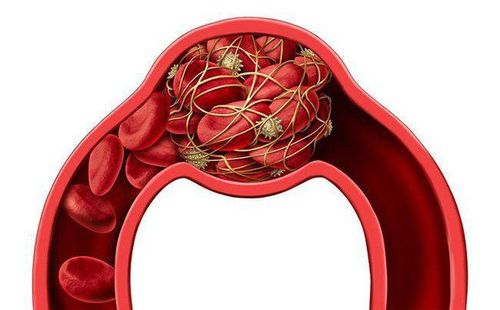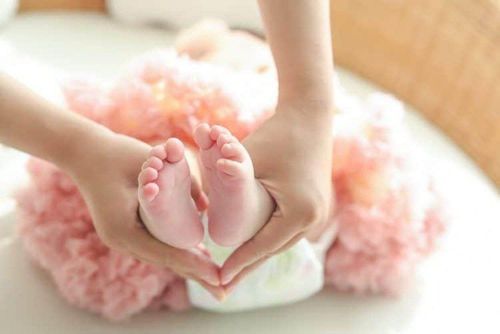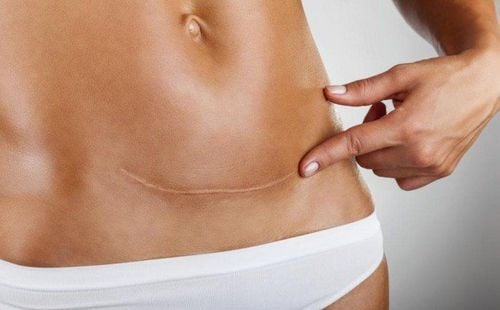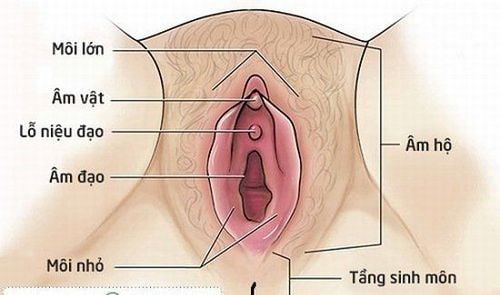This is an automatically translated article.
The article is professionally consulted by Master, Doctor Ly Thi Thanh Nha - Department of Obstetrics and Gynecology - Vinmec International Hospital Da Nang.
Caesarean section is a surgical procedure used to deliver a baby through incisions in the abdomen and uterus. Many people think that a cesarean section will be less painful and more aesthetically pleasing, but a cesarean section carries many risks and the recovery process takes longer.
1. Possible risks after cesarean section
Infection: After a cesarean section you may be at risk for an infection of the lining of your uterus (endometritis). Postpartum haemorrhage: Following a cesarean section can cause heavy bleeding during and after delivery. Reactions to anesthesia: Adverse reactions to any type of anesthesia are possible. Blood clots: Following a cesarean section may increase your risk of developing blood clots inside deep veins, especially in the legs or pelvic organs (deep vein thrombosis). If the blood clot travels to your lungs and blocks blood flow (pulmonary embolism), the damage can be life-threatening. Wound infection: Depending on your risk factors, you may be at increased risk of wound infection. Surgical Injury: Although rare, surgical trauma to the bladder or intestines can occur during a cesarean section. If there was a surgical injury during your cesarean section, additional surgery may be needed. Increased risk in future pregnancies: After a cesarean section you face a higher risk of potentially serious complications in a subsequent pregnancy than during a vaginal delivery. The more times you have a caesarean section, the higher the risk of placental disease, the pregnancy with the cesarean section. The risk of your uterus tearing open along the line of a previous surgery scar (uterine rupture) during pregnancy over a previous incision
2. Notes for pregnant women after cesarean section for quick recovery
Lying on your side, without using pillows: Lying on your side is the most suitable position for mothers who have a caesarean section. However, within the first 6 hours after surgery, women should not use a pillow. At this point, the effect of the anesthetic is no longer there, and the incision begins to hurt. If you lie on your back, it will feel more painful than a contraction of the uterus. Therefore, after returning to the postoperative room, you should lie on your head to one side, straighten your body and do not use pillows to avoid headaches. Should not eat: after surgery, the intestines are stimulated, so the function of the intestines is limited, there is a lot of gas in the intestinal cavity, so after surgery, there is often a feeling of fullness in the abdomen. To reduce gas in the intestines, temporarily do not eat anything so that when the intestine has gradually restored its function, you should eat and drink. Early exercise, early breast-feeding: Early mobilization to avoid stagnation of fluid, which can easily lead to infection, enhances the activity of the intestines and stomach. Early breastfeeding should be started to stimulate lactation, strengthen the child's immunity with drops of colostrum, and also stimulate early uterine contraction to quickly recover from nutrition. Women should exercise early after surgery to avoid fluid retention, intestinal obstruction and lower extremity embolism.
Trắc nghiệm: Đau lưng sau sinh mổ và những điều cần biết
Sau sinh mổ, bà mẹ không chỉ đau đớn với vết khâu bụng dưới mà còn đối mặt với những cơn đau lưng. Mức độ đau lưng sau sinh mổ theo thống kê chiếm đến hơn 70% các trường hợp. Trả lời nhanh 5 câu hỏi trắc nghiệm sau sẽ giúp bạn có thêm kiến thức để hạn chế tình trạng này.The following content is prepared under supervision of Thạc sĩ, Bác sĩ y khoa, Tạ Quốc Bản , Sản phụ khoa , Khoa Sản phụ khoa - Bệnh viện Đa khoa Quốc tế Vinmec Phú Quốc
3. Days after cesarean section
Rest when possible. For the first few weeks, avoid lifting anything heavy. Also, avoid lifting from a squatting position.
Search for pain relief. To ease the pain, your doctor may recommend a heating pad, ibuprofen (Advil, Motrin, others), acetaminophen (Tylenol, others), or other medications to relieve pain. Most pain relievers are safe for women who are breastfeeding. Avoid sex. To prevent infection, avoid sex for six weeks after your cesarean delivery. Eat and drink: Eat from liquid to solid, eat full of nutrients and increase fiber such as vegetables and fruits to avoid constipation, drink enough water as needed, take medicine according to the doctor's prescription. Sleep: get enough sleep 8-10 hours/day, consult a psychologist immediately in case of insomnia, anxiety, postpartum depression. Relax: gently exercise, clean the body every day, clean and dry the genitals with a clean towel after each urination. A suitable method of birth control should be taken on the advice of your doctor. Advice for those who have a caesarean section is to get pregnant again after 2 years because the uterus should have time to recover to avoid risks such as uterine rupture,... Check your incision for signs signs of infection. Pay attention to any signs or symptoms you experience. Contact your doctor if: Your incision is red, swollen, or leaking, you have a fever, are bleeding heavily, have increased pain, discharge is more likely, there is a foul odor, or discharge lasts more than 1 month. Take your baby to a medical facility when: Jaundice, lethargy, constant crying, umbilical bleeding or bad smell. Have your baby re-examined by appointment (if any) and fully vaccinated according to the vaccination schedule. surgery to recover from surgery as soon as possible to avoid possible complications. Within 12 weeks of giving birth, see your doctor for a comprehensive postpartum assessment. During your follow-up appointment, your healthcare provider will check your mood and emotional health, discuss contraception and birth spacing, review information about your care and feed the child, talk about sleep habits and fatigue-related problems, and get a physical exam.
At Vinmec International General Hospital, with a system of modern equipment and machinery, spacious and clean rooms, a team of experienced doctors and nurses will participate in the diagnosis and offer the most optimal method for each patient. depends on each woman. Thanks to that, it gives women absolute peace of mind, comfort, no worries for mother and baby.
In addition, with the advanced and modern painless delivery method and a team of highly qualified professional anesthesiologists, pregnant women will no longer have to struggle with pain, you will have a more comfortable delivery experience. painless at Vinmec is completely different.
Postpartum pain relief techniques to help women reduce pain at the episiotomy after giving birth, ensuring a quick recovery for women who give birth normally will be numbed by ultrasound machine ). For pregnant women who have had a caesarean section, they will be anesthetized by an ultrasound machine in the treatment of postoperative pain. The most recent results of analgesia evaluation showed that: All pregnant women who gave birth by caesarean section did not have to use morphine, and post-partum pain when moving and living was almost no longer recorded.
In addition, mothers have the opportunity to use screening services for babies before and after birth; storing cord blood, cord membrane... at Vinmec Institute of Stem Cells and Gene Technology - the world's most advanced and synchronous automatic storage and handling system.
Master. Doctor. Ly Thi Thanh Nha has worked at Hue University of Medicine and Pharmacy Hospital and Quang Tri Provincial General Hospital before working at Vinmec Danang International General Hospital as it is today.
Doctor Nha has strengths and experience in diagnosing, monitoring and treating pregnancy, pregnancy pathology. Pregnancy screening. Perform caesarean section techniques. Laparoscopic surgery to treat ovarian cysts, ectopic pregnancy.
Please dial HOTLINE for more information or register for an appointment HERE. Download MyVinmec app to make appointments faster and to manage your bookings easily.
Reference source: Mayoclinic.org














